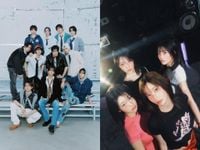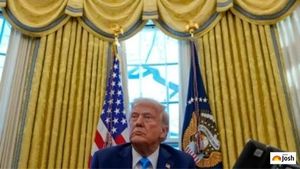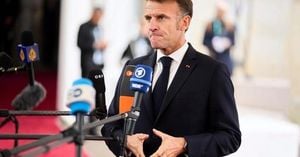On September 29, 2025, the Korean Entertainment Production Council—widely known as Yeha Production Council—stepped into the heart of a storm that’s been brewing in the K-pop world. At the center of the controversy: a dispute over the copyright and production rights of the official light sticks (or "cheering sticks") for two popular groups, The Boys and QWER. What might sound, at first blush, like a niche squabble over fan merchandise has ballooned into a flashpoint for some of the most pressing questions facing the K-pop industry today—questions about intellectual property, creative freedom, fan community, and the future of the global Hallyu wave.
According to iMBC, the conflict erupted when fans of The Boys accused QWER’s newly released cheering stick of being suspiciously similar to the one The Boys had launched back in 2021. Both sticks share a megaphone design, a detail that, while seemingly generic, has become a fiercely contested symbol of group identity. The Boys’ fandom, known as The B, pointed to their earlier design registration as evidence of originality, alleging outright design plagiarism by QWER. In response, QWER’s fanbase, Barwige, countered that "a megaphone is a design anyone could think of," arguing that no single group can claim exclusive rights to such a common object.
As the debate raged on social media, what began as a creative disagreement soon escalated into something uglier. Fans from both sides hurled insults at each other, and the situation deteriorated to the point where QWER’s agency initiated criminal proceedings over malicious online posts. The Boys’ agency, One Hundred, issued a statement expressing empathy for their fans’ frustrations, noting, "The cheering stick is a precious symbol connecting artists and their fandom. We fully understand the discomfort this controversy has caused our fans." They went on to explain that while they had attempted to resolve the matter with QWER’s side—including requesting a design change—no final agreement was reached. One Hundred concluded, "We apologize for not responding more swiftly to the controversy and will take all necessary legal measures, in cooperation with relevant authorities, to prevent such incidents from recurring." (iMBC)
QWER’s camp, for their part, maintained that legal and copyright reviews found no issues with their design and declared they had no intention of changing it. This firm stance only fueled further tension, as each side dug in—neither willing to back down, neither able to claim a decisive victory.
It was against this volatile backdrop that the Korean Entertainment Production Council issued an official statement, seeking to calm the waters—or at least chart a path through them. As reported by JoyNews24 and other outlets, the council emphasized that the foundation for K-pop’s creativity, identity, and sustainable growth rests on the "mutual respect for intellectual property rights and trust among artists, fandoms, companies, and the entire cultural industry." The council urged all parties to balance strict legal judgment with an objective investigation of the facts, as well as to consider industry practices, the public nature of design elements, and the social significance of fandom identity.
The council’s statement pulled no punches: "If each side’s position only clashes in legal terms, the entire K-pop industry risks a decline in creativity, deepening exclusivity and isolation within fan culture, and a loss of trust both at home and abroad." In other words, the stakes are much higher than a single design dispute—they touch on the very fabric of what makes K-pop a global phenomenon.
To address the crisis, the council outlined a multi-pronged plan. First, they called for urgent industry-wide agreements and regulatory reforms to protect intellectual property and creativity. This includes establishing clear guidelines to ensure that the creative assets of agencies, artists, and fandoms are properly safeguarded. Second, they stressed the need for a culture of mutual understanding and respect among fandoms, warning that while collective actions like hashtag campaigns and protests can be healthy expressions of fandom, baseless slander, hate, and cyberbullying are unacceptable and must not be tolerated.
Crucially, the council pledged to maintain a neutral stance, offering mediation and arbitration between the parties. They promised to build an official dispute mediation platform, launch joint industry statements, and kick off public campaigns to foster healthier fan culture. They also proposed institutionalizing the advance registration and public review of official merchandise designs, as well as introducing pre-consultation processes during the planning and vetting stages. The goal: to ensure that disputes like this one can be resolved before they ever reach the boiling point.
In its statement, the council also highlighted the broader implications of the controversy. "The debate over the similarity of The Boys and QWER’s official cheering sticks is not just a matter of simple imitation or dispute. It’s a pivotal moment for the future of K-pop merchandise culture, the sense of community among fandoms, and the competitiveness of Hallyu on the global stage." (JoyNews24)
Industry insiders and observers have noted that the issue goes beyond a single product. It raises fundamental questions about what constitutes originality in a field where trends and shared motifs often blur the lines between inspiration and imitation. The council’s statement acknowledged this complexity, urging all stakeholders to take responsibility for creating an environment where "identity is preserved and creativity can flourish."
Meanwhile, the council has committed to a thorough investigation into the scope of K-pop production rights, including the background and legitimacy of the current dispute. They’ve made it clear that unauthorized use of a group’s brand and identity is a serious matter—one that can lead to legal and administrative actions. Enforcement of strict measures and public investigations are on the horizon, as the council seeks to restore order and protect the rights of creators across the industry. (iMBC, JoyNews24)
For many fans, the controversy has been a sobering reminder of how quickly creative disputes can spiral into community-wide rifts. The council’s warning that "groundless slander and cyberbullying can never be tolerated" reflects a growing concern over the darker side of fandom culture—a problem that’s not unique to K-pop, but is amplified by the intense passion and loyalty that define the scene.
As the dust settles, the industry faces a crucial test. Will it be able to balance the protection of creative rights with the need for openness and collaboration? Can it preserve the spirit of innovation that has propelled K-pop to global heights, while also establishing clear rules of the road for a rapidly evolving market? The answers will shape not just the outcome of this particular dispute, but the future of K-pop itself.
For now, all eyes are on the council’s next steps—and on whether the lessons learned from this controversy can help forge a more resilient, respectful, and creative K-pop ecosystem.





